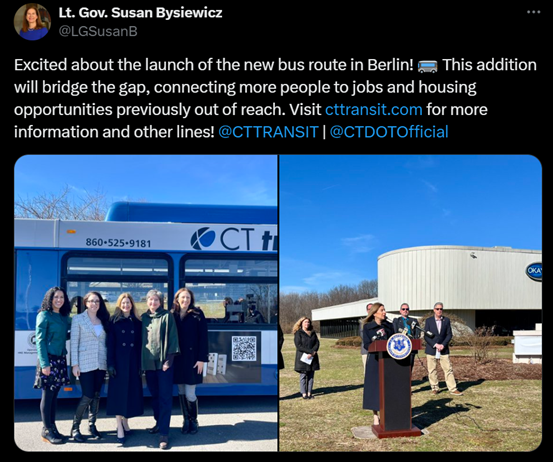Definition of "Disabled": Entitlement to Identification Card
Federal and state authorities have established the following criteria for the purpose of defining individuals who are entitled to reduced transit fares on the basis of disability.
A Reduced Fare Transit Photo ID will be issued to an individual who meets one or more of the following criteria:
Vision Impairment
If the person has a central visual acuity of 20/200 or less in the better eye with the use of a correcting lens. An eye which is accompanied by limitation in the field of vision such that the widest diameter of the visual field subtends an angle no greater than 20 degrees shall be considered as having central visual acuity of 20/200 or less.
Hearing Impairment
If there is no air or bone conduction whatsoever in both ears; or if hearing is so impaired that not withstanding the use of hearing aids the person is incapable of hearing sound below 80 decibels at 2,000 cycles per sound, as verified by audiometric testing.
Ambulatory
(1) If from whatever cause, the person is unable to move about without a “walker,” a wheelchair, crutch(es) or a cane, and if the condition is expected to continue for more than one year from the date of application. The word “unable” is used in its literal sense. The fact that one of these mechanical aids facilitates movement is not sufficient. The applicant must be incapable of moving about, except for extremely short distances, without use of the aid.
Or (2) If the person has an obvious and serious disorder of gait which substantially interferes with the use of mass transportation.
Loss of Arms or Hands
If by reason of amputation or anatomical deformity the person lacks two arms or two hands.
Other
If the person has any other disability which would fall within the following Federal Transit Administration definition: Elderly and handicapped persons means those individuals who, by reason of illness, injury, age, congenital malfunction, or other permanent or temporary incapacity or disability, including those who are nonambulatory wheelchair-bound and those with semi-ambulatory capabilities, are unable without special facilities or special planning or design to utilize mass transportation facilities and services as effectively as persons who are not so affected.
Temporary
A mobility impairment lasting at least three months.
The determination of whether a person is “disabled” with the meaning of the foregoing definition will be made on the basis of submitted evidence.
Certification by a physician is essential to the application if other listed forms of eligibility are not provided. Applicants will have to arrange for the physician’s services at their own expense. We reserve the right to require proof of disability in addition to the physician’s opinion.
A Service of the State of Connecticut
Public Backed Service Expansions Now Underway!
New Bus Routes Available in New Britain, Berlin, Meriden, Plainville, Southington, and Stamford

When the public talks, CT transit listens.
In March of this year, the Connecticut Department of Transportation implemented new bus routes, now serving communities in New Britain, Berlin, Meriden, Plainville, Southington, and Stamford. These new bus routes will bolster connectivity and amplify coverage throughout central Connecticut.
“Public transit is more than just a mode of transportation; it is a lifeline that connects individuals to career opportunities, businesses to customers, and communities to growth,” said General Manager of CT transit, Thomas Stringer. “A robust public transportation system is essential for driving economic impact and supporting local businesses.”
But wait, there’s more!
This service expansion is just the beginning of a series of upcoming expansions, totaling more than $18 million, proposed by Governor Ned Lamont and supported by local legislature. These new routes will provide greater access to a broader range of employment centers and career opportunities across the region, ultimately enhancing residents' career prospects and improving their quality of life.

“This major bus service expansion is the latest effort to connect customers with critical jobs, housing, and services while expanding opportunities for Transit Oriented Development (TOD)—allowing people to live and commute with ease,” said Connecticut Department of Transportation Deputy Commissioner Karen Kitsis. “CTDOT is grateful for the support of Governor Ned Lamont and the Connecticut General Assembly, which responded to customer needs by investing in the expansion of our transit system.”
These new routes were, in part, discovered through feedback from community members, frontline transit workers, and key government officials.
Public Service by the Numbers:
- 4,300 community members surveyed online
- 36 community events across Connecticut
- 29 interviews with transit providers, councils of government, and transit district reps
- 10 customer focus groups
CTDOT’s Customer Experience (CX) Action Plan team gathered this wealth of responses. Based on insights from those we serve, they lead the initiative to develop public transportation innovations throughout the state. This energized team will continue responding to the needs of the people—the customers and supporters of public transit—and propose new paths forward.

Pictured left to right: Samaia Hernandez, Alicia Leite, Lt. Gov. Susan Bysiewicz, Lisa Rivers, and Karen Kitsis.
“As Connecticut works to be a leader in delivering major new transit investments, including CTfastrak and CTrail Hartford Line, we recognize the support and input of our transit providers and customers across Connecticut,” said Connecticut Department of Transportation Public Transportation Bureau Chief Benjamin Limmer. “We look forward to launching new transportation services in communities across Connecticut in the months ahead.”
home text
